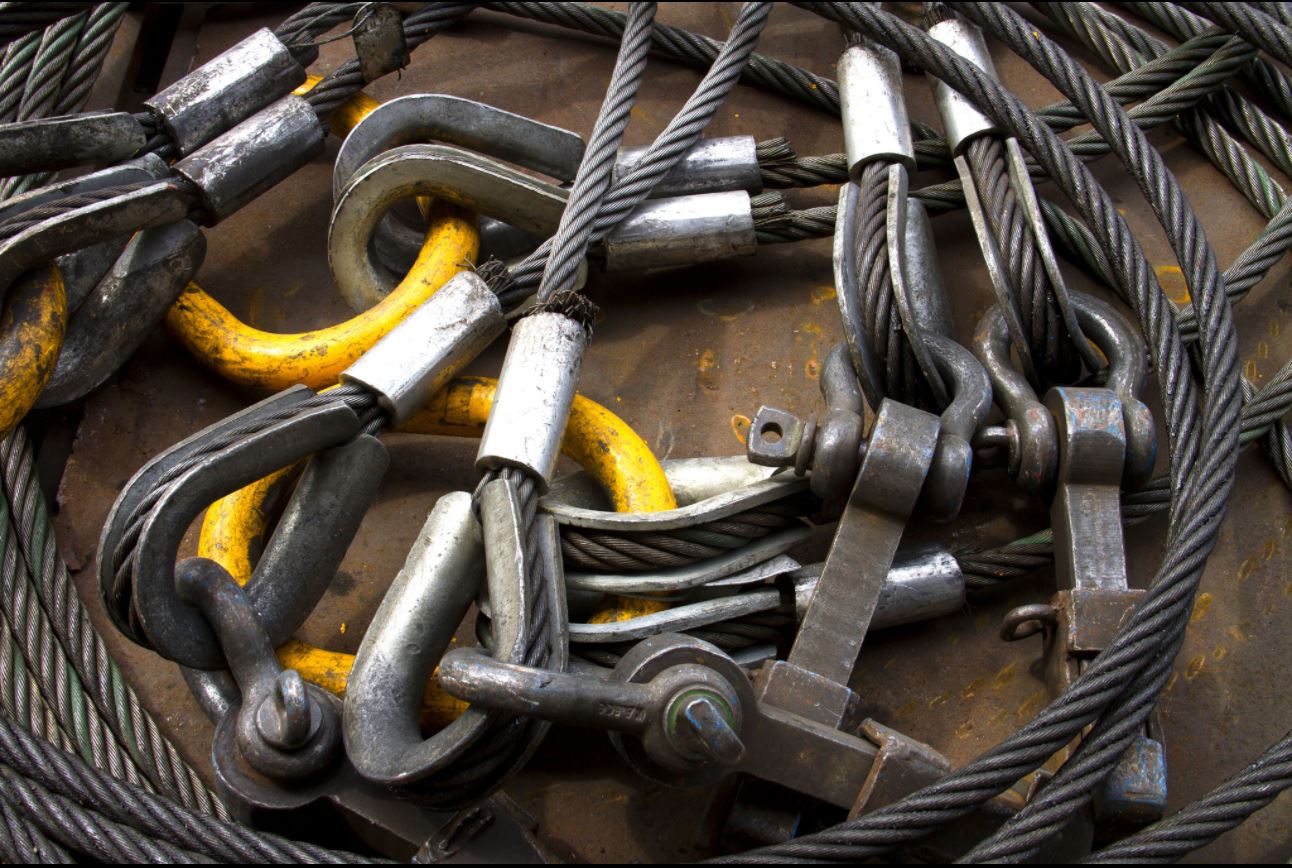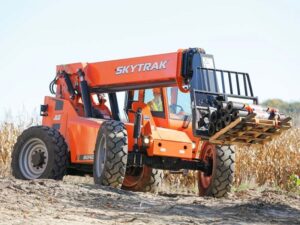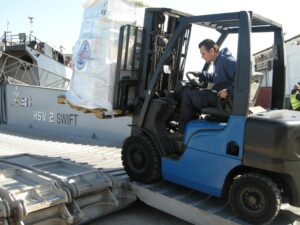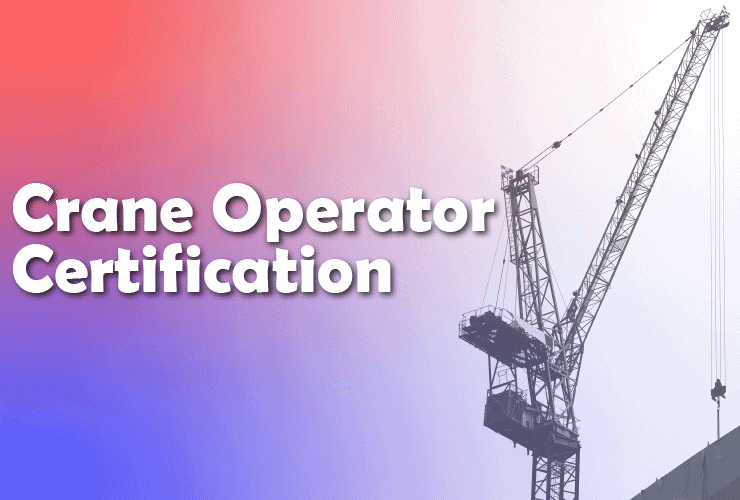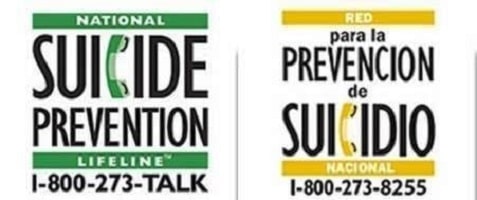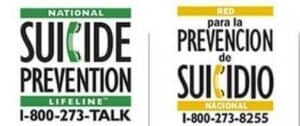Construction cranes are essential for completing large-scale projects, but their operation comes with inherent risks. That’s why it’s crucial to ensure that all components of the crane are in excellent working condition to minimize accidents and injuries. One such component is the sling, which plays a critical role in lifting heavy loads safely. In this blog post, we’ll explore the importance of understanding and applying proper inspection standards for slings on construction cranes to maximize safety on job sites.
Introduction to Sling Inspection Standards
Rigging slings need to be inspected prior to every use. In addition to the visual inspections the rigger may need to implement a hands on tactile inspection were they are actually using their hands to feel for disturbances or anomalies/inconsistencies in the rigging structure. It is important to note that the use of proper PPE such as gloves and safety glasses will be needed during this process.
The purpose of a sling inspection is to identify any damage or defects that could affect the safety of the lifting operation. When inspecting slings, look for cuts, frayed edges, open seams, broken or missing stitching, kinks, gouges, nicks, abrasions, chemical burns, embedded objects, or other signs of damage.
If any damage is found, the sling should be removed from service and destroyed. Do not attempt to repair damaged slings. In some cases, it may be possible to have a damaged sling repaired by a qualified professional; however, this must be done by someone who is specifically trained and certified to do so.
When performing a visual inspection, it is important to use both your eyes and your hands. Look closely at the entire length of the sling for any signs of damage. Feel along the entire length of the sling for any rough spots or sharp edges that could damage the load or cause personal injury.
In addition to inspecting the body of the sling for damage, also inspect all hardware (such as hooks and rings) for cracks, bends, distortion, missing parts, or other signs of damage. Make sure that all hardware is properly secured and will not come loose during use.
Types of Slings Used in Construction Cranes
There are three primary types of slings used in construction cranes: wire rope, synthetic web, and chain. Each type of sling has its own unique set of inspection standards that must be followed in order to ensure safety.
Wire rope slings are the most commonly used type of sling in construction cranes. They are made from high-strength steel wire strands that are twisted together to form a strong, flexible rope. Wire rope slings are available in a variety of sizes and lengths, and can be used for a variety of lifting applications.
Synthetic web slings are made from synthetic materials such as nylon or polyester. They are lighter weight than wire rope slings and have a lower profile, making them ideal for use in tight spaces. Synthetic web slings are also less likely to damage load surfaces than wire rope slings.
Chain slings are made from metal chains that are connected together with links or rings. They are the strongest type of sling available and can be used for heavy-duty lifting applications. However, chain slings require more maintenance than other types of slings and can be more difficult to inspect.
How to Inspect Slings for Safety
Sling inspection is a crucial component of any construction crane safety program. Slings are one of the most commonly used pieces of equipment on construction sites, and they also can be one of the most dangerous. Improper inspection and maintenance of slings can lead to serious accidents and injuries.
There are three main types of sling inspections: visual, functional, and destructive. Visual inspections should be conducted regularly, and should include a close examination of all sling components for signs of wear, damage, or other defects. Functional inspections should be conducted periodically, and involve testing the sling’s strength and durability by putting it under stress. Destructive inspections should only be conducted by qualified personnel, and involve actually breaking the sling in order to test its breaking strength.
When conducting a visual inspection, pay close attention to the following:
- All stitching for signs of fraying or other damage
- All webbing for signs of cuts, abrasions, or other damage
- All hardware for cracks, rust, or other damage
- All labels for legibility and accuracy
If any damage is found during a visual inspection, the sling should be removed from service immediately and replaced. If you are not sure whether a particular defect is serious enough to warrant removal from service, error on the side of caution and replace the sling. Better to be safe than sorry!
During a functional inspection, slings should be tested for proper strength and function. This can be done by suspending a known weight
Defects and Damage that Need to be Looked Out For
There are many different types of defects and damage that can occur to construction cranes, and it is important to be aware of them in order to maximize safety. Some of the most common problems include:
- Wear and tear: Over time, all crane components will experience some degree of wear and tear. This can eventually lead to structural damage or failure if not properly monitored and repaired.
- Corrosion: Corrosion is a major issue for any metal structure, and construction cranes are no exception. If left unchecked, corrosion can cause serious damage to the crane’s frame and other critical components.
- Fatigue: Fatigue is a common problem for construction cranes due to the constant stress they are under. If not properly monitored, fatigue can eventually lead to structural failure.
- Impact damage: Construction cranes are often hit by falling debris or other objects. This can cause serious damage to the crane’s structure and/or components.
- Broken wires: Broken wires on a wire rope sling shall be assessed using the following criteria. 5-broken wires in a outer strand in one lay length, or a total of 10- broken wires in one rope lay length. Please see video demonstration below for additional guidance.
OSHA Requirements and Regulations
When working with construction cranes, it is important to be aware of the Occupational Safety and Health Administration (OSHA) requirements and regulations. OSHA has specific standards for the inspection of slings used with construction cranes. These standards are designed to protect workers from injuries caused by defective or damaged slings.
In order to ensure that slings are safe for use, employers must inspect them before each use. Slings should be inspected for damage such as cuts, abrasions, burns, chemical deterioration. If any damage is found, the sling should be removed from service and replaced.
In addition to inspecting slings before each use, employers must also keep records of all inspections. These records should include the date of the inspection, the name of the person who conducted the inspection, and a description of any damage found. Records must be kept for at least one year.
By following these OSHA requirements and regulations, employers can help protect their workers from injuries caused by defective or damaged slings.
Benefits of Proper Sling Inspection
There are many benefits to properly inspecting slings before using them. Doing so can help avoid costly repairs or replacements, and it can also help identify any potential safety hazards.
Inspecting slings prior to use can help ensure that they are in good working condition and free of any damage that could cause them to fail. It is also important to inspect slings for proper length and width, as well as the correct type of sling for the job at hand.
Inspecting slings on a regular basis can also help extend their lifespan, as early identification of problems can allow for quick and easy replacements as needed. Additionally, regular inspection can help prevent small issues from becoming bigger, more expensive problems down the line.
Conclusion
In conclusion, it is clear that proper inspection and maintenance of construction cranes is essential for ensuring a safe working environment on the job site. Through understanding and applying sling inspection standards, crane operators can identify potential hazards early on and take steps to prevent accidents from occurring. By staying up-to-date with safety regulations, employers can help ensure that their worksites remain secure against any potential dangers. If you would like to learn more about this topic, you can do so by calling us at 800-819-6092, or by signing up for one of our comprehensive rigging training programs listed below.

